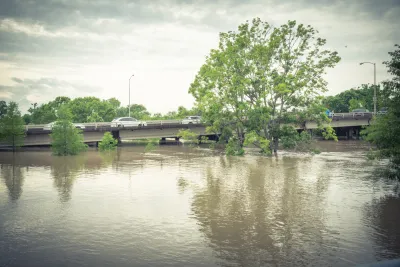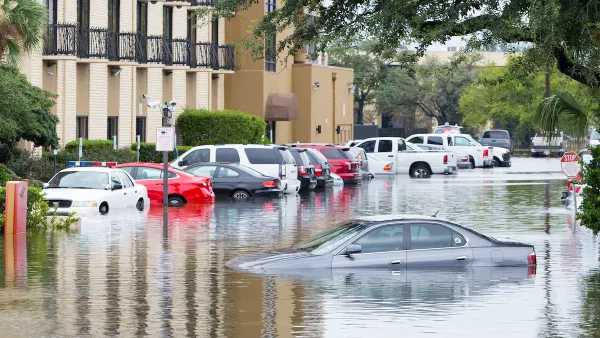The U.S. Army Corps of Engineers has revised a plan to protect the Houston region from flooding by tossing out a proposed tunnel and opting instead to dig Buffalo Bayou wider and deeper.

The U.S. Army Corps of Engineers on October 5 released an interim feasibility report that revised plans to address flooding in Houston, evolving a project launched in the wake of Hurricane Harvey.
Shawn Arraj reported on the news at the time of the interim report's release, noting that the Army Corps had decided against a building a network of underground tunnels leading away from the (Addicks and Barker) reservoirs.
The Army Corps dropped the plans for tunnels because of costs. "Initial cost estimates for the tunnels ranged from $2.2 billion-$12 billion," according to Arraj.
Given the lessons of Harvey and the critical importance of floodwater protections in the face of increasing numbers of extreme weather events, the Army Corps plan is still a frequent topic of discussion in the local news media—and the Houston Chronicle has run two article recently sharing the opinions of local stakeholders critical of the Army Corps' approach to stormwater resilience in the area.
The decision to dig the Buffalo Bayou wider and deeper is the subject of a recent article by Emily Foxhall, who focuses on the criticisms of conservationists who say the new plan reflects old-fashioned thinking at the Army Corps, and call for a nature-focused approach to resilience.
"People puzzled over why the Corps wasn't continuing to look at tunnels, considered less disruptive to communities, or excavating more dirt from the Addicks and Barker reservoirs, maybe building a new park space on top," writes Foxhall.
Another article by Lisa Gray provides an in-depth interview with Jim Blackburn, the co-director of the SSPEED Center at Rice University. When asked for an assessment of the report, Blackburn says it might have been a stroke of genius for riling up so much of the community. "It caused the community to really take this under their wing in a way that they may not have done otherwise," says Blackburn in the interview.
Public feedback on the October interim feasibility report is expected to help the Army Corps decide on a final proposal. The Harris County Flood Control District would need to approve the majority of funding for whatever project comes to fruition. Congressional approval will also be necessary.
FULL STORY: Digging Buffalo Bayou deeper? Houstonians up in arms over Army Corps' 'old-fashioned' flood fixes.

Analysis: Cybertruck Fatality Rate Far Exceeds That of Ford Pinto
The Tesla Cybertruck was recalled seven times last year.

National Parks Layoffs Will Cause Communities to Lose Billions
Thousands of essential park workers were laid off this week, just before the busy spring break season.

Retro-silient?: America’s First “Eco-burb,” The Woodlands Turns 50
A master-planned community north of Houston offers lessons on green infrastructure and resilient design, but falls short of its founder’s lofty affordability and walkability goals.

Test News Post 1
This is a summary

Analysis: Cybertruck Fatality Rate Far Exceeds That of Ford Pinto
The Tesla Cybertruck was recalled seven times last year.

Test News Headline 46
Test for the image on the front page.
Urban Design for Planners 1: Software Tools
This six-course series explores essential urban design concepts using open source software and equips planners with the tools they need to participate fully in the urban design process.
Planning for Universal Design
Learn the tools for implementing Universal Design in planning regulations.
EMC Planning Group, Inc.
Planetizen
Planetizen
Mpact (formerly Rail~Volution)
Great Falls Development Authority, Inc.
HUDs Office of Policy Development and Research
NYU Wagner Graduate School of Public Service



























